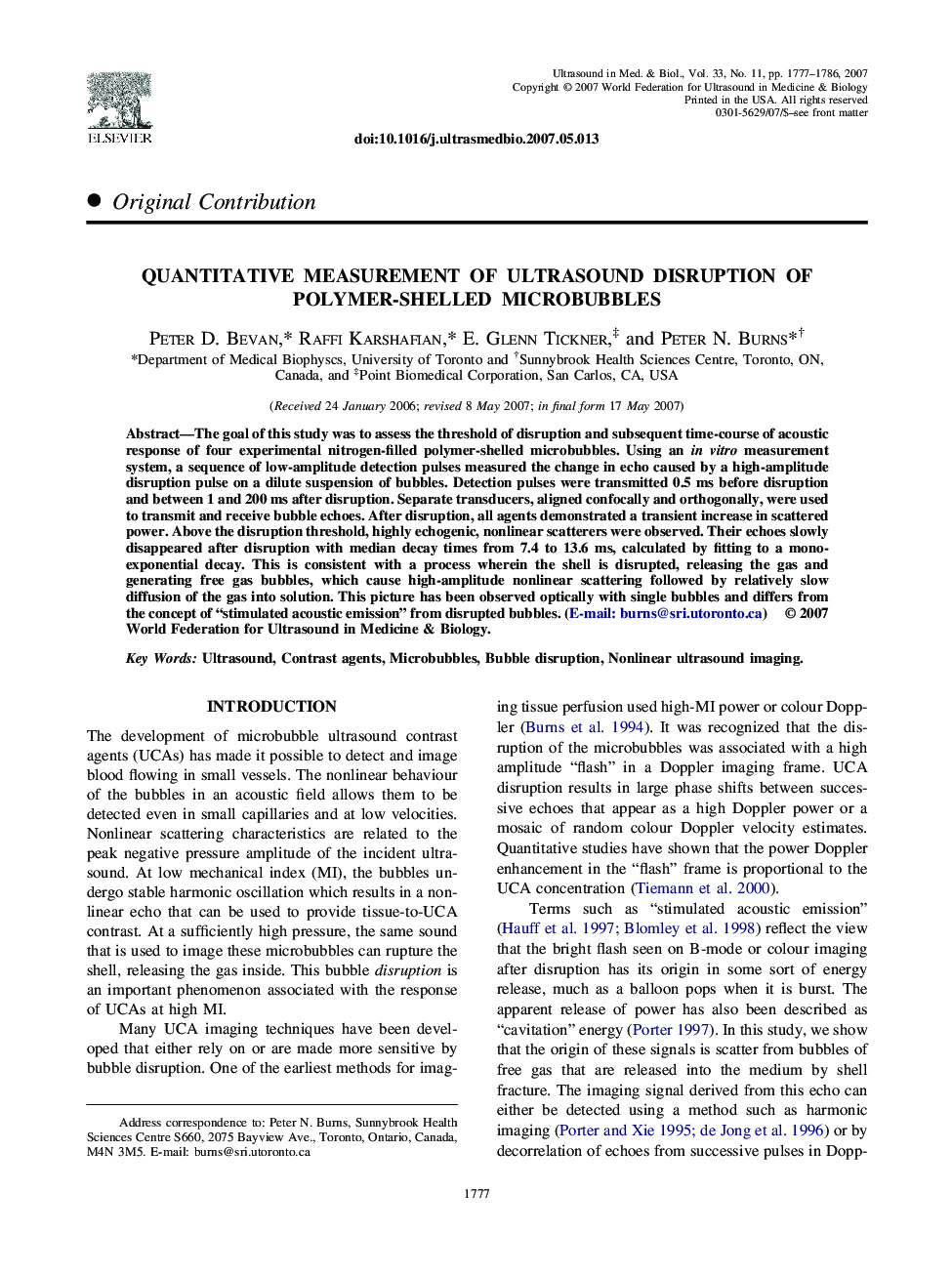| Article ID | Journal | Published Year | Pages | File Type |
|---|---|---|---|---|
| 1762811 | Ultrasound in Medicine & Biology | 2007 | 10 Pages |
Abstract
The goal of this study was to assess the threshold of disruption and subsequent time-course of acoustic response of four experimental nitrogen-filled polymer-shelled microbubbles. Using an in vitro measurement system, a sequence of low-amplitude detection pulses measured the change in echo caused by a high-amplitude disruption pulse on a dilute suspension of bubbles. Detection pulses were transmitted 0.5 ms before disruption and between 1 and 200 ms after disruption. Separate transducers, aligned confocally and orthogonally, were used to transmit and receive bubble echoes. After disruption, all agents demonstrated a transient increase in scattered power. Above the disruption threshold, highly echogenic, nonlinear scatterers were observed. Their echoes slowly disappeared after disruption with median decay times from 7.4 to 13.6 ms, calculated by fitting to a mono-exponential decay. This is consistent with a process wherein the shell is disrupted, releasing the gas and generating free gas bubbles, which cause high-amplitude nonlinear scattering followed by relatively slow diffusion of the gas into solution. This picture has been observed optically with single bubbles and differs from the concept of “stimulated acoustic emission” from disrupted bubbles. (E-mail: burns@sri.utoronto.ca)
Related Topics
Physical Sciences and Engineering
Physics and Astronomy
Acoustics and Ultrasonics
Authors
Peter D. Bevan, Raffi Karshafian, E. Glenn Tickner, Peter N. Burns,
